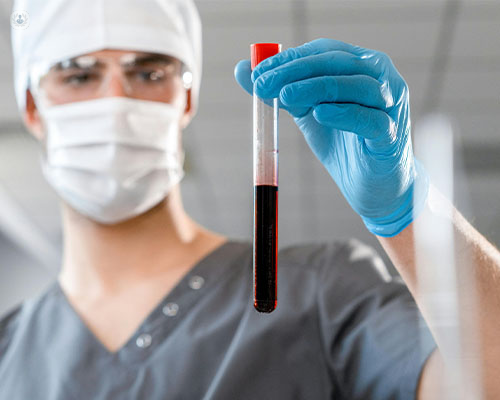When blood is much thicker than water: what to know about thrombophilia
Written in association with:Thrombophilia is when the blood clots too frequently and very quickly. It is a disorder that can be genetic or acquired and may cause clots in the veins and arteries, obstructing flow. While blood clots can help stop wounds from bleeding and help them scab over faster to promote healing, internally this can cause issues. The body should normally break them down after time, but with thrombophilia, the body makes too many of them and also doesn’t break down the older ones fast enough. Professor Vassilis Hadjianastassiou, an expert surgeon in the vascular system, shares with us what you need to understand about thrombophilia.

What causes thrombophilia?
Genetic thrombophilia is inherited via the direct bloodline of one or both parents, and means that the body is unable to make the correct balance of proteins to build and dismantle blood clots. Inherited kinds of thrombophilia include Factor V Leiden and Prothrombin G20210A. Acquired thrombophilia is more common and can be contracted from exposure to diseases, medications, and lifestyle. Thrombophilia can develop in patients who also have HIV, hepatitis, liver disease or even in patients using the oral contraceptive pill.
What can thrombophilia cause?
Thrombophilia isn’t necessarily dangerous, but when too many clots build up, it can have adverse and life-threatening effects like:
- Deep-vein thrombosis (DVT)
- Strokes
- Pulmonary embolism
- Heart attack
- Kidney failure
- Miscarriage
What are the symptoms of thrombophilia?
Clots can happen anywhere blood flows in the body. There are no symptoms of thrombophilia other than clotting which will not manifest externally until there is too much obstruction in the blood flow, causing conditions such as:
- Swelling of the limbs and blood vessels
- Pain in the stomach, limbs, and chest
- Headaches
- Nausea
- Wooziness
- Seizure
- Pain during deep breathing
- Shortness of breath
- Areas of heated skin that is painful to the touch
These symptoms may be similar to those of other conditions so it is always better to get examined by a doctor to get a definite diagnosis. Thrombophilia can be diagnosed with a thorough disclosure of medical and family history, and blood tests to examine the proteins in the blood and the way the blood flows, such as an ultrasound Triplex scan or an angiogram. Those who have had a blood clot before the age of 50, multiple miscarriages, and blood clots without known causes could get tested for thrombophilia.
How is thrombophilia treated?
Thrombophilia isn’t curable, but it is manageable with a prescription of blood thinners (anticoagulants), or thrombolytics in extreme and urgent cases, which are clot-dissolving drugs administered directly into the circulation. To lower the risk of acquired thrombophilia, it is recommended to avoid smoking tobacco and staying physically active.
If you believe you may have thrombophilia, or are struggling with blood clot issues, book an appointment with a Professor Hadjianastassiou via his Top Doctors profile.


